Managing a project from start to finish is no easy feat. Although project management software is more accessible than ever, a lot of projects still struggle to come in on time or under budget. Why? Poor resource allocation. Sadly, no company has an infinite supply of everything, and if you don’t know how to use your resources well, they’ll simply run out.
Below, we’ll explain what a resource allocation process is and why it’s vital in project management. We’ll also give you a few tips on how to use monday work management to keep all your resources organized.
Get startedWhat is resource allocation?
Resource allocation is the process of managing and tracking all the resources you need to deliver a result—whether a product, project, or service. It’s a strategic process focused on assigning available resources to the right place at the right time. In other words, it’s about maximizing the returns on your resources while keeping your projects on track.
Imagine you and your friend are building a rocking chair for your neighbor. But you only have one toolbox. You have one saw, one hammer, one piece of sandpaper, and one bottle of wood glue. Resource allocation will determine how to best split those tools between the pair of you to build a high-quality chair as efficiently as possible.
If your friend can hammer in nails more quickly than you (without hurting themselves), you’d allocate the hammer to them. Meanwhile, you might be more efficient with the saw. And maybe you split the piece of sandpaper in half. As you can see, half the battle in figuring out your optimal utilization lies in the strength of your decision-making.
The 2 types of resources
Project progress relies on two types of resources:
- Tangible resources that you can see or touch, for example, time, financial resources, labor, machinery, real estate, and software.
- Intangible resources are a more abstract resource, for example, ideas, intellectual property, processes, techniques and relevant skills.
Who’s responsible for resource allocation?
In small and medium-sized organizations, the project manager is most often the person responsible for making efficient resource allocation decisions.
Larger enterprise organizations may have entire departments dedicated to project management. These include resource managers on staff whose primary job is allocating project resources adequately.
Benefits of effective resource management
At a basic level, effective resource management boils down to making sure you have enough of everything to do a great job and achieve stellar results. When this happens, you’ll achieve the following core benefits of resource allocation.
Increased collaboration
When everyone knows who’s doing what and with which resources, teamwork becomes seamless. Clear resource allocation allows shared roles—like a designer supporting multiple projects—to work efficiently across teams without delays. With proper resource management, every team member knows their priorities, timelines, and dependencies, fostering smoother communication and collaboration.
Greater efficiency
Resource management is smart—it ensures every resource is assigned where it’s needed most. By eliminating idle time or mismatched task assignments, projects move faster with fewer disruptions. For example, instead of scrambling to find additional resources mid-project, proactive allocation means your workflows can run smoothly without a hitch. Project management tools like monday work management allow you to visualize resource availability and spot any upcoming bottlenecks so you can act on them.
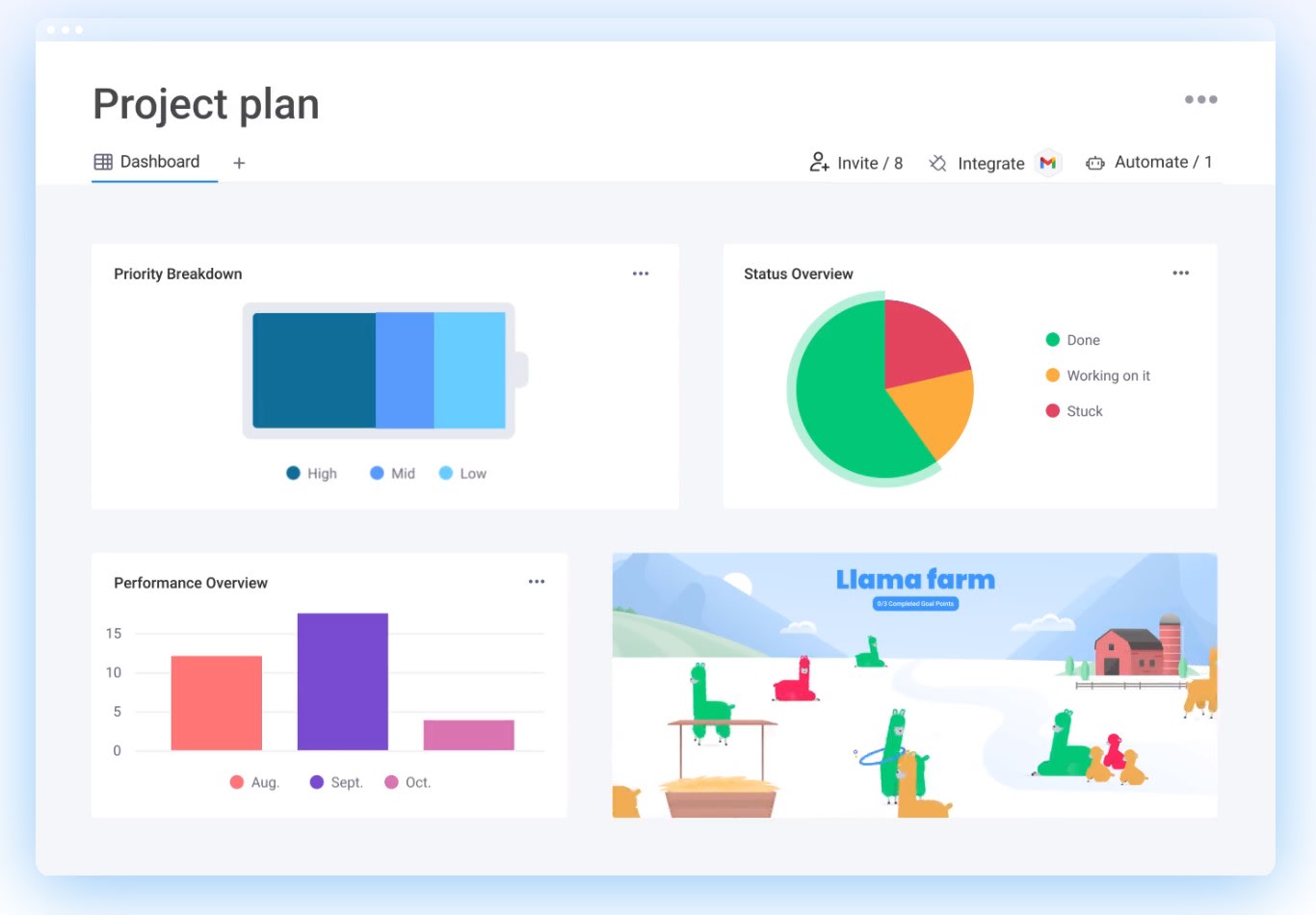
Enhanced team morale
Nothing demotivates a team faster than being overworked. Allocating resources fairly ensures workloads are balanced so no one feels overwhelmed. This boosts morale, reduces stress, and leads to better performance. For example, by tracking workload distribution, you can adjust assignments before burnout sets in, making your project team feel supported and valued.
Reduced project costs
Project budget overruns often stem from inefficiencies, like forgetting to track where your resources are going or making unrealistic estimates. Smart resource allocation helps you avoid these pitfalls. For example, you might reassign underutilized resources or cut back on non-essential expenses to save significant costs over a project’s lifecycle. It’s about making the most of what you have within your budget constraints.
More satisfied customers
Clients expect projects delivered on time, within budget, and to a high standard. When resources are managed effectively, you reduce project delays, maintain quality, and meet deadlines—all of which contribute to happy customers. In turn, client satisfaction means people are more likely to return for future projects or recommend your services to others, making resource management a win-win for everyone involved.
Superior management of project conflicts
Most organizations have scarce resources and several projects or initiatives competing for them. Sensible allocation in project management allows you to jump on these resource conflicts before they become a problem.
Better handling of scope creep
Project scope can change—and, in our experience, almost always does. Whether it’s new client demands, unexpected technical challenges, or shifting market conditions, these changes can disrupt timelines, budgets, and resource usage. Sensible allocation of resources ensures you’re prepared to adapt efficiently and achieve your project requirements.
Challenges of resource allocation
Resource allocation isn’t always plain sailing. Here are some common obstacles to overcome:
Limited resources
No organization has infinite resources, and balancing needs across multiple projects is a constant challenge. Whether it’s a lack of budget, insufficient materials, or not enough hours in the day, this scarcity requires strategic decision-making. For example, if you only have one specialist with a specific skill, you might need to delay their involvement in a lower-priority project to focus on higher-impact work.
Insufficient skills
Even when resources are available, skill shortages can throw a wrench into your plans. If a critical task requires expertise your team doesn’t have, your project probably won’t be a success. Upskilling your team or hiring temporary contractors can bridge these gaps, but both require foresight and strategic planning.
Overburdened resources
Resource overallocation is simply giving too much work to one resource. When resources are stretched too thin, productivity plummets. For example, assigning too many tasks to your specialist team member because they’re the best person for all the jobs, results in them not being the best person for any job. Proper allocation involves balancing workloads and reallocating resources as project priorities shift, ensuring teams remain effective, engaged, and energized.
Lack of visibility
Resource allocation depends on having a clear picture of what’s available and when. Without this visibility, it’s easy to overcommit resources or miss critical gaps. Resource management tools like monday work management can provide real-time insights into resource availability, helping you allocate smarter and avoid any nasty surprises.
Get started3 examples of proper resource allocation
Resource allocation isn’t just about dividing up resources—it’s about using them strategically to drive results. Here’s how these three organizations were able to optimize their resource management:
Savills uses automation to maximize creative resources
Savills, a global real estate leader, had several resource management issues including fragmented teams and misallocated talent. The design team was bogged down with basic, non-creative tasks, and many divisions weren’t using the breadth of Savills’ marketing services effectively.
Savills switched to monday.com to automate routine requests which freed up creative resources for high-value projects. Using our platform also delivered visibility into team workload charts and business priorities, so everyone could work on their project objectives in alignment with the company’s overarching goals.
TTC delivered a Black Friday marketing campaign with a lean team
The Travel Corporation (TTC) operates a global portfolio, including 40 global brands like Trafalgar and Contiki Tours. The company was struggling to allocate its marketing resources effectively, so it switched to monday.com to drive efficiencies successfully.
Using just ten team members, TTC’s lean marketing department delivered 360+ assets for a global Black Friday campaign, achieving exceptional results. Real-time dashboards now provide visibility into workloads and risks, enabling data-driven decisions and seamless collaboration across time zones—proving TTC’s commitment to delivering great work faster.
Coles 360 enhances resource allocation for campaign efficiency
Coles 360, the media network of Coles supermarkets, needed to centralize its resource management processes during a rapid expansion. Operating across multiple departments and media channels, Coles 360 used monday.com to streamline campaign workflows and enhance collaboration with suppliers and creative agencies. Within its first year, Coles used our platform to manage 3,000+ campaigns efficiently, saving 8,200 hours per month.
How to allocate resources effectively on monday work management
monday work management is built on the monday.com Work OS as a dedicated platform to handle every aspect of your organization’s workflows. Its built-in functionality allows teams and organizations of any size or type to allocate resources sensibly and achieve shared project goals faster. Here are some tips on how to use monday work management to allocate resources effectively.
1. Determine project scope and resources
Create a project scope statement that clearly documents the resources you need and how much of each. Setting your original scope (and planning for potential changes) helps you assign tasks to the right people when that time comes. So, before you give your team their to-dos, know the project’s goal, budget, and time frame.
Additionally, list out your current availability of resources. Most organizations have multiple projects running at once, which leaves limited resources in some areas. See if you can move task priorities around to get the resources you need within your budget.
monday work management provides intuitive, customizable dashboards to deliver all the resource insights you need at a glance. Configure yours using drag-and-drop widgets to display details about your budget, workloads, schedules, and other resources, so you’ll instantly know where your project stands.

2. Evaluate your human resources objectively when assigning tasks
Some managers may be tempted to assign tasks based on their rapport with certain team members. But resource allocation is all about efficiency, not relationships. You must rely on objective evaluations of each team member’s skill sets and abilities to allocate their talents properly.
Imagine your project involves creating a complex website. Your best bet is to assign only your best web developers to the project.
monday work management allows you to make sharp, informed decisions about which talent to use and where to deploy them. Using real-time data and project dashboards, it’s easy to view workloads, planned vacation time, productivity levels, and more to assign team members to the best tasks.
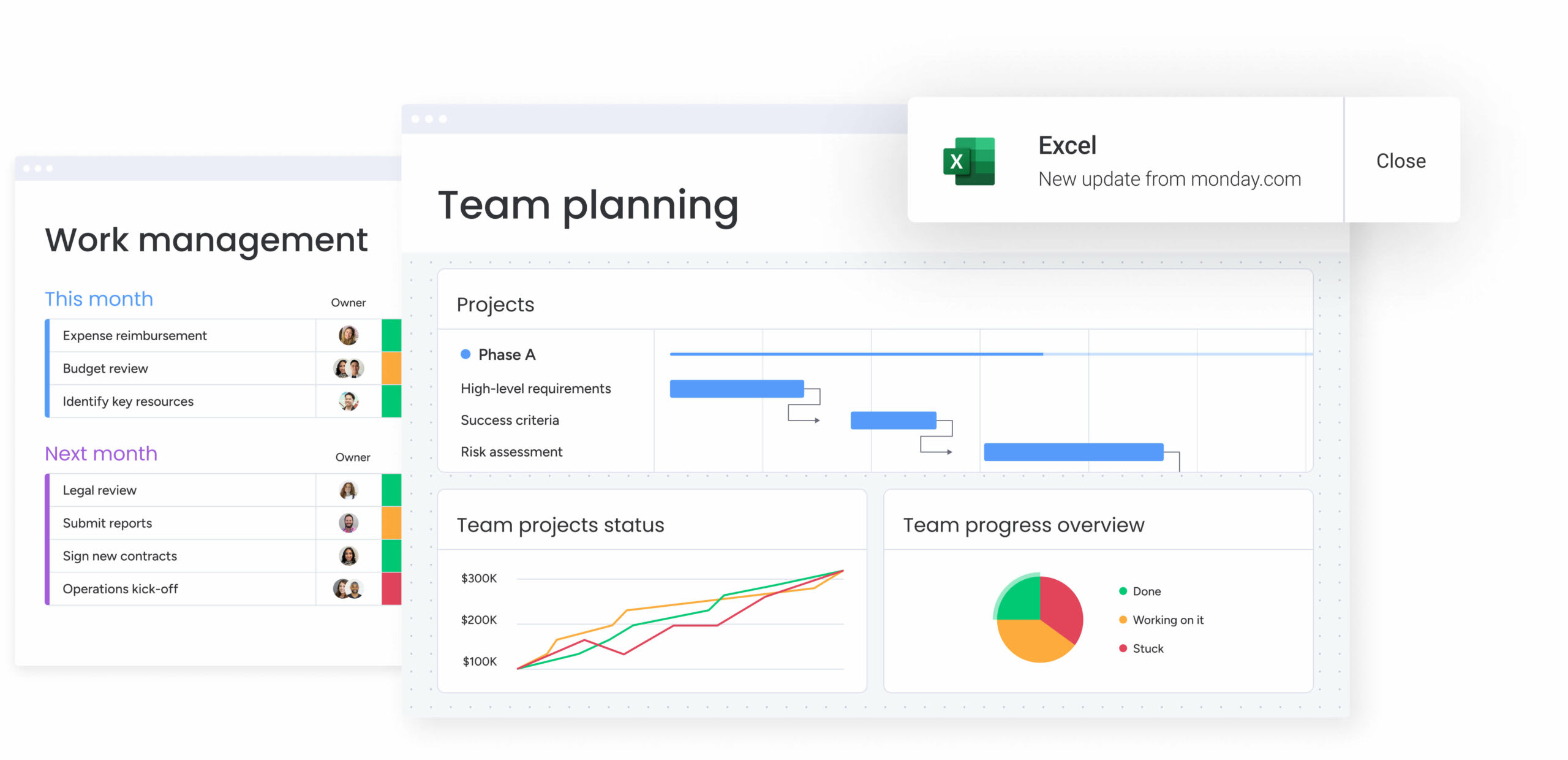
3. Use built-in resource management features
monday work management is highly customizable to fit the exact needs of your upcoming projects and processes. But that doesn’t mean you have to set it up from scratch. Our platform gives you a headstart, as it’s equipped with ready-made resource allocation tools like team planning, domain overviews, and task breakdowns. You’ll have everything you need to plan, schedule, and allocate resources to maximize efficiency.
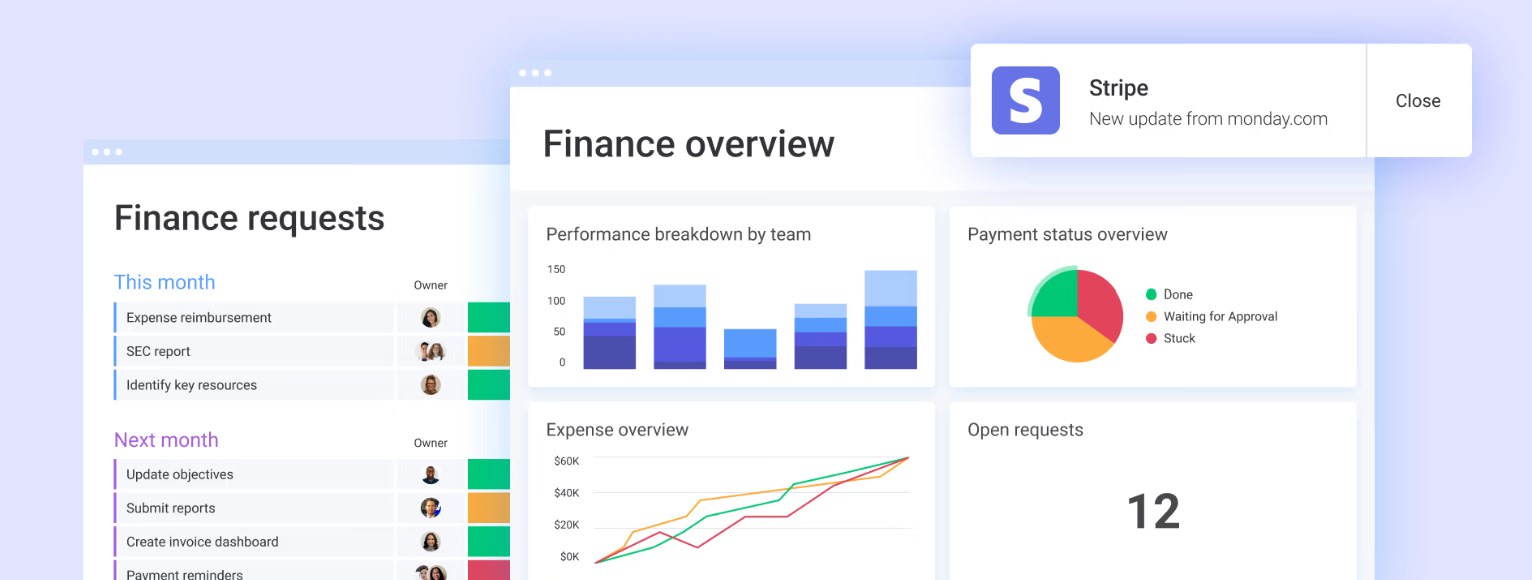
4. Automate requests and approvals
Save valuable time in gaining executive approval for certain resources by automating this process. monday work management includes built-in custom forms and project approval workflows so you can quickly and easily gain sign-off on budget, personnel, assets, etc.
And if you prefer to build your own request and approval process, you can also use our no-code building blocks to create the perfect automation sequence.

5. Keep communicating as plans change
Projects change frequently in terms of budget, scope, and timeline, so it’s vital to keep everyone in the loop. For example, a website client may suddenly want new features or functionality added to their web pages. You’ll likely need to allocate more developers to the project, especially if you need a particular skill to implement these new features.
Strong communication is at the heart of any project, especially if you need to pivot or defer to a contingency plan. monday work management acts as a central location to host these team discussions, and also integrates with essential communication tools like email or direct messaging software to provide visibility into external conversations.
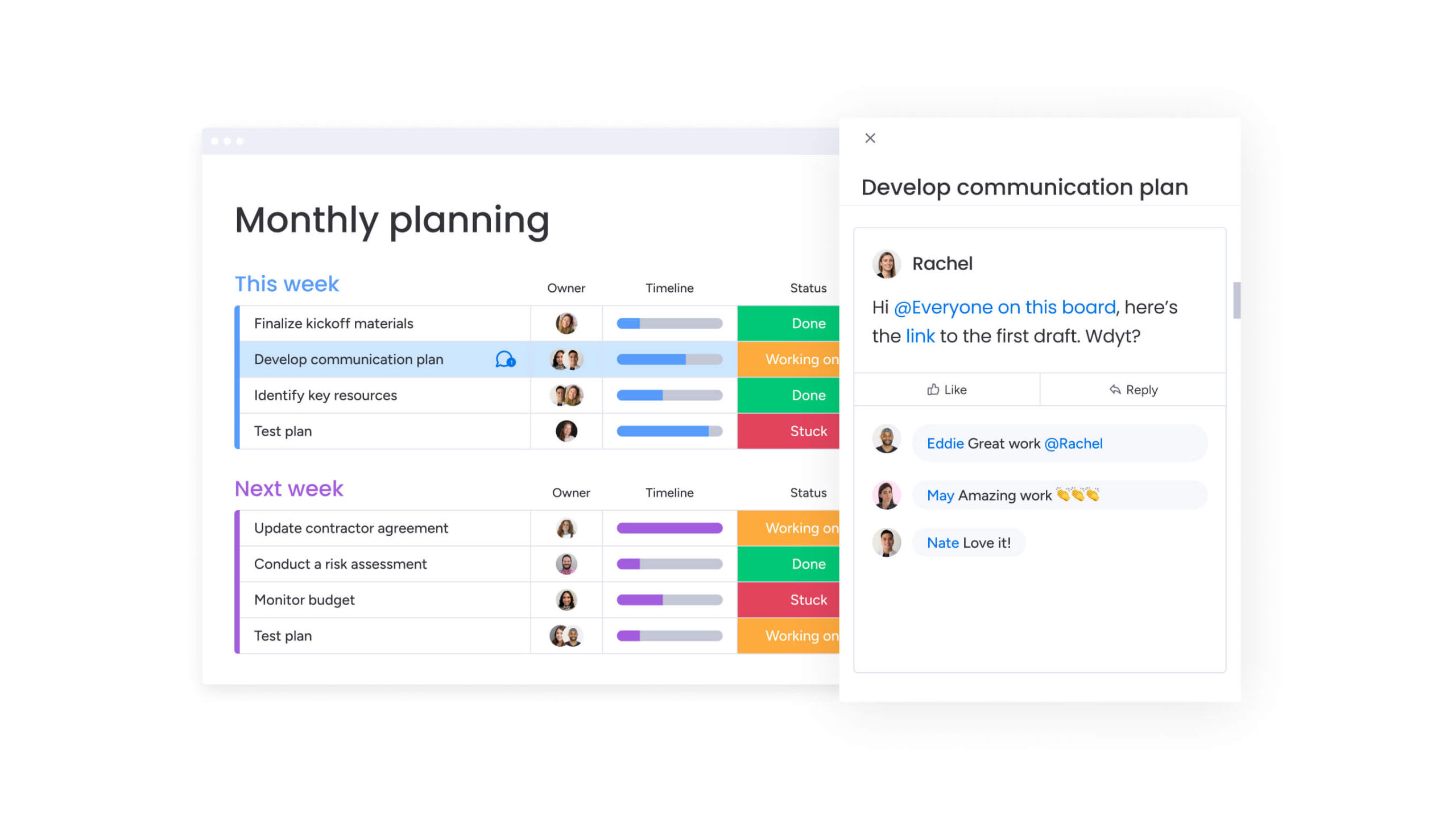
6. Brainstorm solutions
The best resource allocation strategies aren’t always immediately obvious, and that’s ok. Sometimes, you need to get several heads together to take corrective action and brainstorm the path ahead.
monday workdocs provides the perfect space to collaborate in real time. You can add boards, videos, dashboards, and other embedded items directly into your docs so you have everything you need to make excellent decisions about resource allocation.
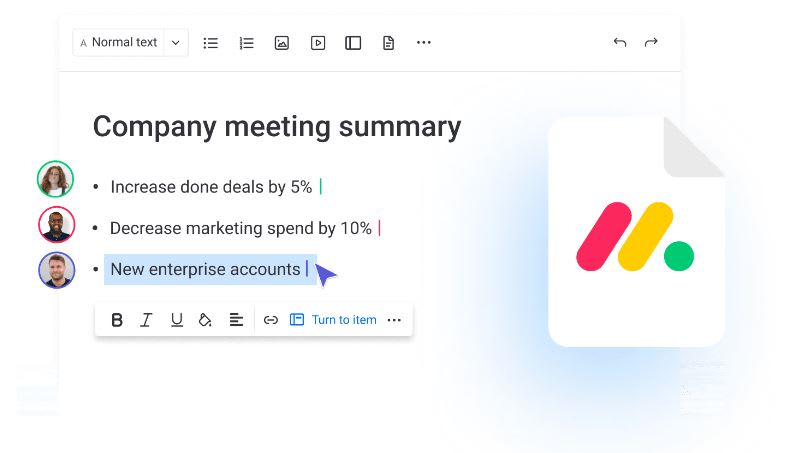
Prioritize resource allocation with monday work management
Effective resource allocation starts by building a plan to ensure a smooth project process that’s delivered on time and under budget.
monday work management is your resource allocation plan. It’s an essential part of your utilization strategy—a place to collaborate, gain approvals, view insights, and make informed decisions about anything related to resource management. Our platform will deliver the best possible return on each of your resources by decreasing work delays, adapting to scope changes, providing razor-sharp decisions, and more.
Take a free trial of our resource management platform here.
Get startedFAQs
What is an example of a resource allocator?
A resource allocator is any type of agent that manages and assigns resources to projects efficiently. A restaurant manager is an excellent example of a resource allocator. They’re in charge of allocating resources such as staff, ingredients, and finances to different aspects of the restaurant to ensure its success.
What are 3 forms of allocation?
Three forms of allocation are time allocation (assigning time to different tasks and projects,) financial allocation (routing budget to different project expenses) and resource allocation (ensuring there are sufficient people, equipment and materials assigned to specific tasks.)
What is an example of a resource allocation problem?
Overallocation is an example of a common resource utilization problem. When a team has too many projects or tasks and not enough resources to complete them, this results in stress and lower-quality work.
What are three basic questions of resource allocation?
When you have internal resource constraints during a project or product development cycle, ask the following three questions to determine adequate assets:
- What resources are needed for this project/task?
- How much of each resource is required?
- How can we effectively allocate these resources to ensure timely and successful completion?
What is the ideal method of resource allocation?
The critical path method is an ideal method of resource allocation. It involves identifying the critical activities that must be completed within a project and allocating resources accordingly to ensure they are completed on time. The goal of using this resource allocation method is to prevent delays in the project timeline.
What is resource leveling?
Leveling is the process of redistributing resources across activities to avoid overallocation in any particular area. It balances resource usage and minimizes delays caused by resource constraints. Often, project managers will use resource allocation software during the leveling process to even out the workload for team members and ensure a smoother project process.
